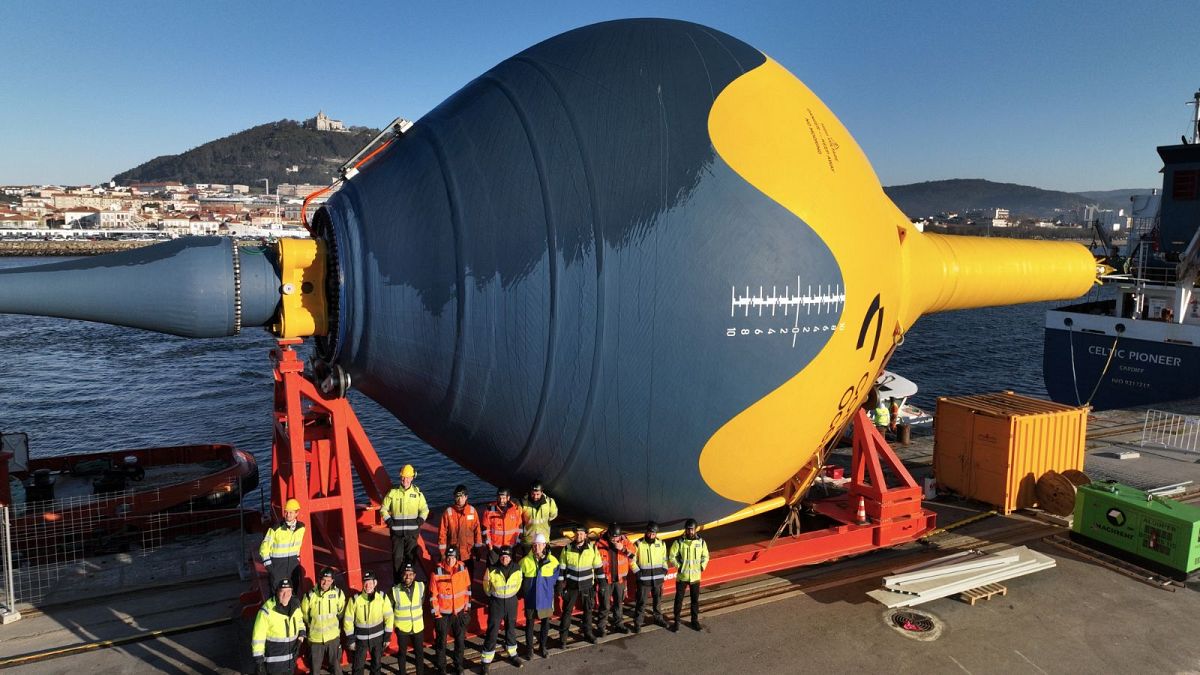
Wetlands are regions of land that are generally saturated with water. However, when rain causes water to pool on land, it does not constitute a wetland. More specifically, wetlands are areas where water either covers the soil or is found at or near the soil surface year-round or for fluctuating periods throughout the year.
These ecosystems encompass marshes, swamps, peatlands, lagoons, mangroves, and floodplains. Wetlands provide habitats for a wide range of species, function as natural water filters, and assist in alleviating the impacts of climate change. What do wetlands do anyway? Wetland ecosystems directly and indirectly benefit millions of people, offering various goods and services.

They help regulate floods, inhibit coastal erosion, and lessen the impacts of natural disasters such as cyclones and tidal waves. They also have the ability to store water for extended durations. Their capacity to hold excess flood water during heavy rains prevents flooding and supports a steady flow downstream, thus maintaining water quality and enhancing biological productivity for both aquatic organisms and local human populations.
Flooded wetlands efficiently capture rainwater and serve as a key resource for replenishing groundwater aquifers. Many wading birds and waterfowl, including egrets, herons, and cranes, find breeding grounds in wetlands. Additionally, wetlands offer food and habitat for various mammals.
They function as natural filtration systems, helping to eliminate a wide array of pollutants from water, including harmful viruses and heavy metals. Wetlands retain nutrients by sequestering excessive nitrogen and phosphorus in the subsoil, thereby reducing the likelihood of eutrophication. Mangrove forests are particularly valued for their production of fish and shellfish, livestock fodder, fuel, construction materials, traditional medicine, honey, and beeswax, although many mangrove areas have been replaced by other types of land use.
Furthermore, significant socio-economic benefits such as a reliable supply of water, fisheries, firewood, medicinal plants, livestock grazing opportunities, agricultural resources, energy, wildlife, transportation, and recreation and tourism are notable. Unfortunately, since 1970, nearly 35% of global wetland areas have been lost, mainly due to human activities like agricultural drainage, urban expansion, and pollution. This concerning decrease prompted the need for global efforts to safeguard these vital ecosystems for future generations.
Black-winged stilts forage for food in a shallow pool at the Pong Wetland, which hosts thousands of migratory birds in winter months, in Nagrota Suriyan, Himachal Pradesh state, India. | Photo Credit: AP Signing to protect The Ramsar Convention on wetlands, established in 1971, is an international treaty that outlines the framework for conserving wetlands and their resources, which became effective in 1975. Since then, nearly 90% of UN member nations have joined this initiative.
World Wetlands Day is celebrated every February 2 to commemorate the adoption of the Ramsar Convention. The theme for World Wetlands Day 2025 is ‘protecting wetlands for our common future,’ emphasising the significance of this essential resource for both the environment and human prosperity. The United Nations officially recognised February 2 as World Wetlands Day in 2021.
Originally, the event aimed to promote awareness about wetland conservation; however, it has since transformed into a worldwide movement that engages governments, NGOs, and communities. Wetlands cover about 6% of the earth’s land surface. There are several kinds of wetlands, such as marshes, swamps, lagoons, bogs, fens, and mangroves.
They are home to some of the richest, most diverse, and most fragile of natural resources. The association of man and wetlands is ancient, with the first signs of civilisation originating in wetland habitats such as the floodplains of the Indus, the Nile Delta, and the Fertile Crescent of the Tigris and Euphrates rivers. As they support a variety of plant and animal life, biologically they are one of the most productive ecosystems as well.
India has a wealth of wetland ecosystems distributed in different geographical regions. Most of the wetlands in India are directly or indirectly linked with major river systems such as the Ganges, Cauvery, Krishna, Godavari, and Tapti. India has a total of 27,403 wetlands, of which 23,444 are inland wetlands and 3,959 are coastal wetlands.
According to the Directory of Asian Wetlands (1989), wetlands occupy 18.4% of the country’s area (excluding rivers), of which 70% are under paddy cultivation. The coastal wetlands occupy an estimated 6,750 sq.
km and are largely dominated by mangrove vegetation. About 80% of the mangroves are distributed in the Sundarbans of West Bengal and the Andaman and Nicobar Islands, with the rest in the coastal states of Odisha, Andhra Pradesh, Tamil Nadu, Karnataka, Kerala, Goa, Maharashtra, and Gujarat. Wetlands in southern peninsular India are mostly manmade and are known as yeris (tanks).
They are constructed in every village and provide water for various human needs, besides serving as nesting, feeding, and breeding sites for a large variety of bird species. A survey by the Wildlife Institute of India revealed that 70-80% of individual freshwater marshes and lakes in the Gangetic floodplains have been lost in the last five decades. At present, only 50 percent of India’s wetlands remain.
They are disappearing at a rate of 2% to 3% every year. Indian mangrove areas have been halved almost from 7,00,000 hectares in 1987 to 4,53,000 hectares in 1995 (Sustainable Wetlands, Environmental Governance-2, 1999). A recent estimate based on remote sensing shows only 4000 sq.
km of mangrove resources in India. Pallikaranai marsh houses thousands of flamingos. Wetlands are drying up and shrinking all over the country, including the Pallikarani Marsh, one of the largest wetlands in India at the time, and many species of migratory birds are in the extinction stage due to droughts and climate change.
| Photo Credit: Shaju John The loss of wetlands leads to environmental and ecological problems, which have a direct impact on the socio-economic benefits of the associated populace. Serious consequences, including increased flooding, species decline, deformity or extinction, and decline in water quality, could result. Wetlands are also important as a genetic reservoir for various species of plants, including rice, which is a staple food for 3/4 of the world’s population.
The National Committee on Wetlands, Mangroves, and Coral Reefs constituted to advise the government on appropriate policies and measures to be taken for the conservation and management of the wetlands, has identified 93 wetlands for conservation and management on a priority basis. India currently has 85 sites designated as Wetlands of International Importance (Ramsar Sites), with a surface area of over 1.34 million hectares.
Published - February 22, 2025 04:19 pm IST Copy link Email Facebook Twitter Telegram LinkedIn WhatsApp Reddit In School / environmental pollution / environmental issues / environmental cleanup / environmental politics / nature / nature and wildlife / migration / conserves / habitat (conservation) / conservation.















